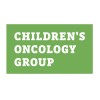
Monoclonal Antibody Therapy Plus Sargramostin in Treating Patients With Advanced Neuroblastoma
NeuroblastomaRATIONALE: Monoclonal antibodies can locate tumor cells and either kill them or deliver tumor-killing substances to them without harming normal cells. Combining colony-stimulating factors, such as sargramostim, with monoclonal antibodies may be an effective treatment for advanced neuroblastoma. PURPOSE: Phase II trial to study the effectiveness of monoclonal antibody 3F8 plus sargramostim in treating patients who have advanced neuroblastoma.

Temozolomide Plus Peripheral Stem Cell Transplantation in Treating Children With Newly Diagnosed...
Brain and Central Nervous System TumorsChildhood Germ Cell Tumor6 moreRATIONALE: Drugs used in chemotherapy use different ways to stop tumor cells from dividing so they stop growing or die. Combining chemotherapy with peripheral stem cell transplantation may allow the doctor to give higher doses of chemotherapy drugs and kill more tumor cells. PURPOSE: This phase I/II trial is studying the side effects and best dose of temozolomide when given with peripheral stem cell transplantation and to see how well they work in treating children with newly diagnosed malignant glioma or recurrent CNS tumors or other solid tumors.

Erlotinib and Temozolomide in Treating Young Patients With Recurrent or Refractory Solid Tumors...
Previously Treated Childhood RhabdomyosarcomaRecurrent Childhood Brain Tumor10 moreThis phase I trial is studying the side effects and best dose of erlotinib when given with temozolomide in treating young patients with recurrent or refractory solid tumors. Erlotinib may stop the growth of tumor cells by blocking the enzymes necessary for their growth. Drugs used in chemotherapy, such as temozolomide, work in different ways to stop tumor cells from dividing so they stop growing or die. Giving erlotinib with temozolomide may kill more tumor cells.

Radiation Therapy, Chemotherapy, and Peripheral Stem Cell Transplantation in Treating Patients With...
Brain and Central Nervous System TumorsNeuroblastomaRATIONALE: Radiation therapy uses x-rays to damage tumor cells. Drugs used in chemotherapy use different ways to stop tumor cells from dividing so they stop growing or die. Peripheral stem cell transplantation may allow doctors to give higher doses of radiation therapy and chemotherapy and kill more tumor cells. PURPOSE: Phase II trial to study the effectiveness of radiation therapy, chemotherapy and peripheral stem cell transplantation in treating patients with primitive neuroectodermal tumors.

Irinotecan in Treating Children With Refractory Solid Tumors
Childhood Central Nervous System Germ Cell TumorChildhood Choroid Plexus Tumor20 moreThis phase II trial is studying irinotecan to see how well it works in treating children with refractory solid tumors. Drugs used in chemotherapy use different ways to stop tumor cells from dividing so they stop growing or die.

Interleukin-11 Plus Filgrastim Prior to Peripheral Stem Cell Transplantation in Patients With Non-Hodgkin's...
Breast CancerGestational Trophoblastic Tumor6 moreRATIONALE: Interleukin-11 and filgrastim stimulate the production of blood cells. Giving these drugs to stimulate peripheral stem cells that can be collected for peripheral stem cell transplantation may result in fewer side effects after transplant. PURPOSE: Phase II trial to study the effectiveness of interleukin-11 plus filgrastim prior to peripheral stem cell transplantation in patients who have non-Hodgkin's lymphoma, Hodgkin's disease, breast cancer, or other solid tumors.

Fenretinide in Treating Children With Recurrent or Resistant Neuroblastoma
Recurrent NeuroblastomaThis phase II trial is studying how well fenretinide works in treating children with recurrent or resistant neuroblastoma. Drugs used in chemotherapy use different ways to stop tumor cells from dividing so they stop growing or die.

Biomarkers of Renal Dysfunction in Neuroblastoma Survivors
Neuroblastoma SurvivorsThe main purpose of this study is to learn more about biomarkers of kidney function in the blood and urine of neuroblastoma survivors. A biomarker is a biological molecule found in blood, urine, other body fluids, or tissues that is a sign of a normal or abnormal process, or of a condition or disease. A biomarker may be used to see how well the body responds to a treatment for a disease or condition.

Bevacizumab, Irinotecan and Temozolomide for Relapsed or Refractory Neuroblastoma
NeuroblastomaThe purpose of this study is to find how good and how safe the combination of irinotecan, temozolomide and bevacizumab is for patients with resistant or recurrent neuroblastoma. These drugs have each been given separately to patients, but they have never been given all together. Irinotecan and temozolomide are two drugs that have been used together to treat neuroblastoma in many people. These drugs are considered chemotherapy. Bevacizumab is another drug used to treat cancer. It is made by a company called Genentech. Bevacizumab is an antibody. Antibodies are proteins that are found in the blood and can attach themselves to bacteria and viruses. Bevacizumab attaches itself to a special protein in the bloodstream. This protein helps tumors grow new blood vessels. Blood vessels carry nutrients to feed the tumor. Bevacizumab is thought to block this growth of new blood vessels and starve tumors. It has been used for the treatment of many cancers in adults. It is approved by the FDA for the treatment of adults with colon cancer and other cancers but not for people with neuroblastoma. There is only a small amount of information known on using this drug in children. It has been used with irinotecan before to treat cancer but not in children with neuroblastoma.

Parental Decision-Making for Children With Relapsed Neuroblastoma
Relapsed NeuroblastomaParental decision-making for children with advanced cancer is complex. Many parents have overly optimistic beliefs about prognosis and as a result choose aggressive measures even at the end of life, which are associated with greater suffering. Yet most parents wish to limit suffering, and in retrospect, many regret choices for cancer treatment for advanced cancer. These findings suggest that parents do not always have the information they need to make decisions that reflect their preferences. The proposed study will evaluate parental decision-making in advanced cancer, addressing gaps in the literature in 3 important respects. 1) Previous work on decision-making for children with advanced cancer has typically looked at decisions at one point in time, often asking parents to reflect on decisions after the child's death, even though parents' understanding of prognosis and decisions about care evolve over time. We will evaluate parental decision-making for advanced cancer over time. 2) Existing work focuses on aggressive end-of-life care as the worst possible outcome. However, some parents wish to pursue aggressive measures even when they recognize that the child has little chance for cure. We will evaluate the extent to which parental decision-making is informed and consonant with preferences, regardless of whether decisions lead to aggressive or palliative care. 3) Previous studies have focused on groups of different childhood cancers, making it difficult to ascertain whether differences in decision-making reflect differences in diseases, options for care, or parent preferences. We will focus on a single disease, relapsed neuroblastoma, as a model for parental decision-making.
